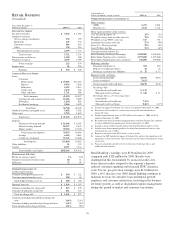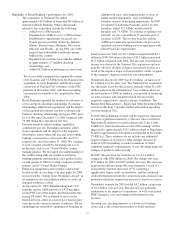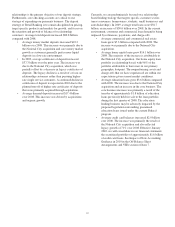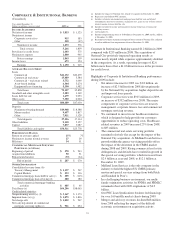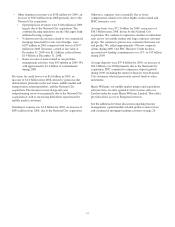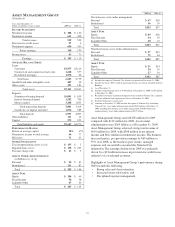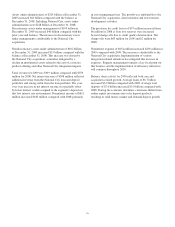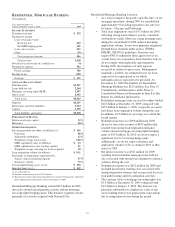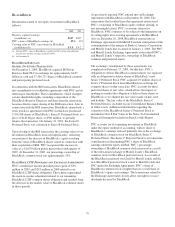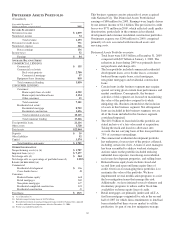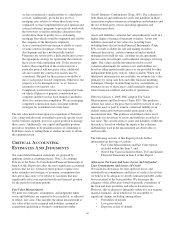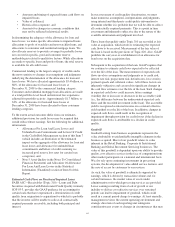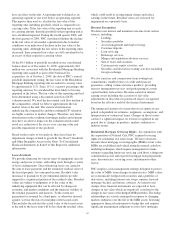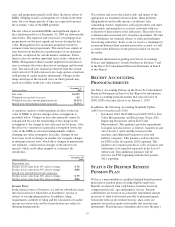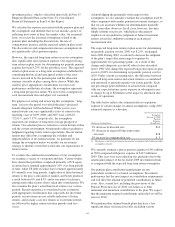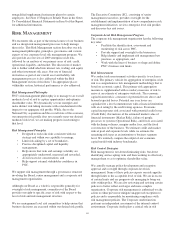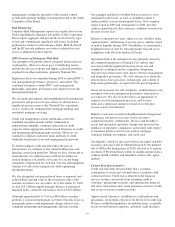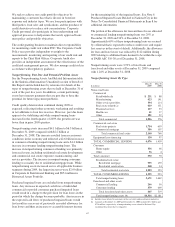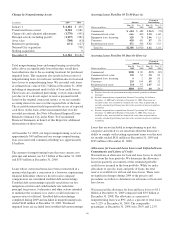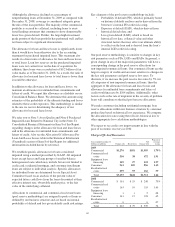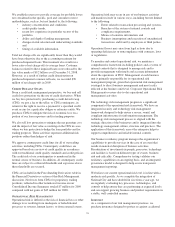PNC Bank 2009 Annual Report Download - page 64
Download and view the complete annual report
Please find page 64 of the 2009 PNC Bank annual report below. You can navigate through the pages in the report by either clicking on the pages listed below, or by using the keyword search tool below to find specific information within the annual report.we have transferred a small portfolio to a third party
servicer. Additionally, given the low level of
mortgage rates relative to where these loans were
originated, we have implemented several internal and
external refinance programs to proactively work with
the borrowers to explore refinance alternatives that
would allow them to qualify for a conforming
mortgage loan which would be originated and sold by
the company or the third party originator.
• Active construction loans remain available as a part
of some construction phases of the real estate
development and have not been fully funded.
Properties are reviewed by a dedicated team to assess
the appropriate strategy for optimizing the return on
these assets while mitigating risk. To the extent we
believe that completion of the construction on a
particular project will maximize value, additional
advances under the construction facility may be
considered. The goal for these projects would be to
move such project toward completion. Otherwise, the
property is to be managed on an “as is” basis or
returned to raw land for sale.
• Completed construction loans are comprised of loans
on which all phases of property construction are
complete and the loan has been funded as needed to
allow for construction completion. We are managing
completed construction loans consistent with the
strategies for residential real estate loans.
The fair value marks taken upon our acquisition of National
City, along with the team assembled to provide specific focus
on this business segment, put us in a good position to manage
these assets. Additionally, our capital and liquidity position
provide us flexibility to be prudent in terms of continuing to
hold these assets or selling them to another investor to obtain
the optimum return.
C
RITICAL
A
CCOUNTING
E
STIMATES
A
ND
J
UDGMENTS
Our consolidated financial statements are prepared by
applying certain accounting policies. Note 1 Accounting
Policies in the Notes To Consolidated Financial Statements in
Item 8 of this Report describes the most significant accounting
policies that we use. Certain of these policies require us to
make estimates and strategic or economic assumptions that
may prove inaccurate or be subject to variations that may
significantly affect our reported results and financial position
for the period or in future periods.
Fair Value Measurements
We must use estimates, assumptions, and judgments when
assets and liabilities are required to be recorded at, or adjusted
to reflect, fair value. This includes the initial measurement at
fair value of the assets acquired and liabilities assumed in
acquisitions qualifying as business combinations under
GAAP, Business Combinations (Topic 805). The valuation of
both financial and nonfinancial assets and liabilities in these
transactions requires numerous assumptions and estimates and
the use of third-party sources including appraisers and
valuation specialists.
Assets and liabilities carried at fair value inherently result in a
higher degree of financial statement volatility. Assets and
liabilities measured at fair value on a recurring basis,
including those elected under Financial Instruments (Topic
825), include available for sale and trading securities,
financial derivatives, certain commercial and residential
mortgage loans held for sale, customer resale agreements,
private equity investments, and residential mortgage servicing
rights. Fair values and the information used to record
valuation adjustments for certain assets and liabilities are
based on either quoted market prices or are provided by other
independent third-party sources, when available. When such
third-party information is not available, we estimate fair value
primarily by using cash flow and other financial modeling
techniques. Changes in underlying factors, assumptions, or
estimates in any of these areas could materially impact our
future financial condition and results of operations.
Effective January 1, 2008, PNC adopted Fair Value
Measurements and Disclosures (Topic 820). This guidance
defines fair value as the price that would be received to sell a
financial asset or paid to transfer a financial liability in an
orderly transaction between market participants at the
measurement date. This guidance established a three level
hierarchy for disclosure of assets and liabilities recorded at
fair value. The classification of assets and liabilities within the
hierarchy is based on whether the inputs to the valuation
methodology used in the measurement are observable or
unobservable.
The following sections of this Report provide further
information on this type of activity:
• Fair Value Measurements and Fair Value Option
included within this Item 7, and
• Note 8 Fair Value included in Notes To Consolidated
Financial Statements in Item 8 of this Report.
Allowances For Loan And Lease Losses And Unfunded
Loan Commitments And Letters Of Credit
We maintain allowances for loan and lease losses and
unfunded loan commitments and letters of credit at levels that
we believe to be adequate to absorb estimated probable credit
losses incurred in the loan portfolio. We determine the
adequacy of the allowances based on periodic evaluations of
the loan and lease portfolios and other relevant factors.
However, this evaluation is inherently subjective as it requires
material estimates, all of which may be susceptible to
significant change, including, among others:
• Probability of default,
• Loss given default,
• Exposure at date of default,
60


